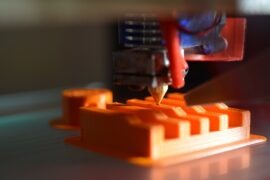As a designer, engineer, or maker, how will you be able to keep pace in an industry that is consistently being disrupted by “New Faces” and creating entire businesses literally overnight? As products come to market faster than ever before, what is the best strategy towards placing yourself in an ever-increasingly competitive creative global economy? How can you harness the future of Making and use these new technologies to your advantage?
AU2012 Innovation Forum | The Future of Making
In this Autodesk University 2012 Innovation Forum, guests including Jay Rogers (CEO and Founder of Local Motors), Mark Hatch (President and CEO of Maya), Jason Martin and Patrick Triato (Designers, Zooka Soundbar), and others discuss the spectrum of disruptive and enabling technologies that are allowing products to go to market faster and cheaper than ever before:
Jay Rogers, President, CEO & Co-Founder, Local Motors

“I am on year five of a hundred year odyssey to change the shape of automobiles.”
“There are three revenue streams that support our business. We make tools and services and we sell products.”
“We used to share information likes this [image of paper], but today we can share image like this [3D model].”
“Today, somebody from across the world can understand how to make it [your design]. And that is a fundamental difference between today’s learning and making and yesterday’s making and learning.”
“It took the British 200 years to come through their industrial revolution, it took America 50 years, it has taken China 10 years and individuals can take it back in one year.”
“When someone tells you it’s a good idea, odds are it’s already been done. When someone says it’s a bad idea, that’s when the wheels should start turning. Because it’s probably great.”
“We don’t look for an average number of designs; we are looking for a bolt out of the blue for a problem. We find something that is deeply interesting and polarizing.”
Ash Notaney, Vice President of Product & Innovation, Project Frog

“Any discussion on the future should start by talking about trends. In New York right now, you have under construction 1 World Trade Center. It’s the same shape and size, roughly, as the Empire State Building and it’s talking much, much longer to build. Is that really the future?”
“So much of the cost of construction is in the overhead. More than 70% of construction cost is inefficient and that’s the opportunity.”
“It starts by having a tool kit of parts and each of these parts is very, very detailed. The components for the buildings are manufactured off-site. They come flat packed on truck and they’re put in place with a crane. We then have someone on site timing everything down to the second and then we work to see how we can improve efficiencies.”
Jason Martin, CEO, and Patrick Triato, Lead Designer, Carbon Audio

“There’s loud and then there’s louder-er. We’re louder-er.”
“From concept to shelf, it was about seven months.”
“Constantly try to reinvent yourself. Ask yourself – what’s the next big thing? That’s how to define a new category.”
Mark Hatch, CEO, TechShop

“I’m a professional revolutionary, as a professional revolutionary my job is to recruit and radicalize. You are seeing a revolution in front of your eyes and I am hoping you’ll join the revolution.”
“Using what you just heard from this panel, what will your company make?”
“I used to work in new product development and it would take ages to get something out. Not anymore.”
“All it takes is one small act to join the revolution. So, what I’d like you to do is make one present for your family or friends this Christmas and you’ll have been a part of the revolution.”
Mickey McManus, President and CEO, MAYA Design

“We manufacture more processors in a year, than we can grow grains of rice. Over 10 billion processors and that number is growing.”
“Nature can teach us something. You are a complex information system in your own right.”
“It’s a massive opportunity for complexity, the danger isn’t complexity, it’s malignant
complexity.”
“I’m worried we might have a crisis of creativity in the future. I don’t know if we’re investing in the right things for our kids.”
“The future is about creativity and agility.”





![6 Types of Civil Engineering Drawings [Detailed Guide]](https://www.solidsmack.com/wp-content/uploads/2023/12/Civil-Engineering-Drawings-270x180.jpeg)
